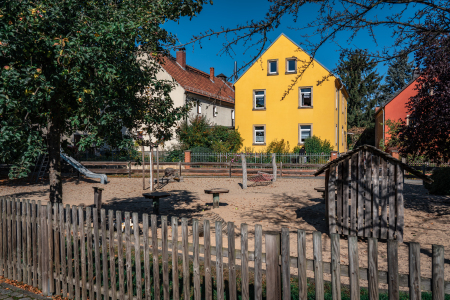Historic village green Wahnsdorf
Wahnsdorf is another of Radebeul's original communities and was first mentioned in 1350. In the 14th century, it belonged to the burgraves of Dohna and in the 17th century was under the control of the Hermsdorf manor.
In 1445, the village comprised 17 estates. Viticulture was already practised at that time.
In 1420, an outlying estate with a vineyard and press house is mentioned. Around 1600, there were 70 vineyards in Wahnsdorf.
Wahnsdorf is laid out as a street village and widens in the eastern part into a partly double-rowed built-up area, on which a fire-fighting pond was created in the 19th century. The building fabric of several closely spaced three-sided courtyards dates back to the 18th century.
In church and school terms, the village belonged to neighbouring Reichenberg.
The inn Altwahnsdorf 56 was first mentioned in 1620. A second village inn was established in 1870 with the "Zur Friedenslinde" inn.
The "Wilhelmshöhe", "Zum Pfeiffer" and the restaurant "Zur grauen Presse" are added as further excursion inns.
A meteorological observatory is built on the highest point in 1915/16.
On 1 April 1934, Wahnsdorf was incorporated into Radebeul with a population of 1000 at the time and has had its own local council since 1990. Of all the Lößnitz municipalities, Wahnsdorf is still the most strongly characterised by agriculture.
Tip:
On the village green stele in Wahnsdorf you will find another QR code for the audio story of "bidden and uninvited guests in the Spitzhaus".


